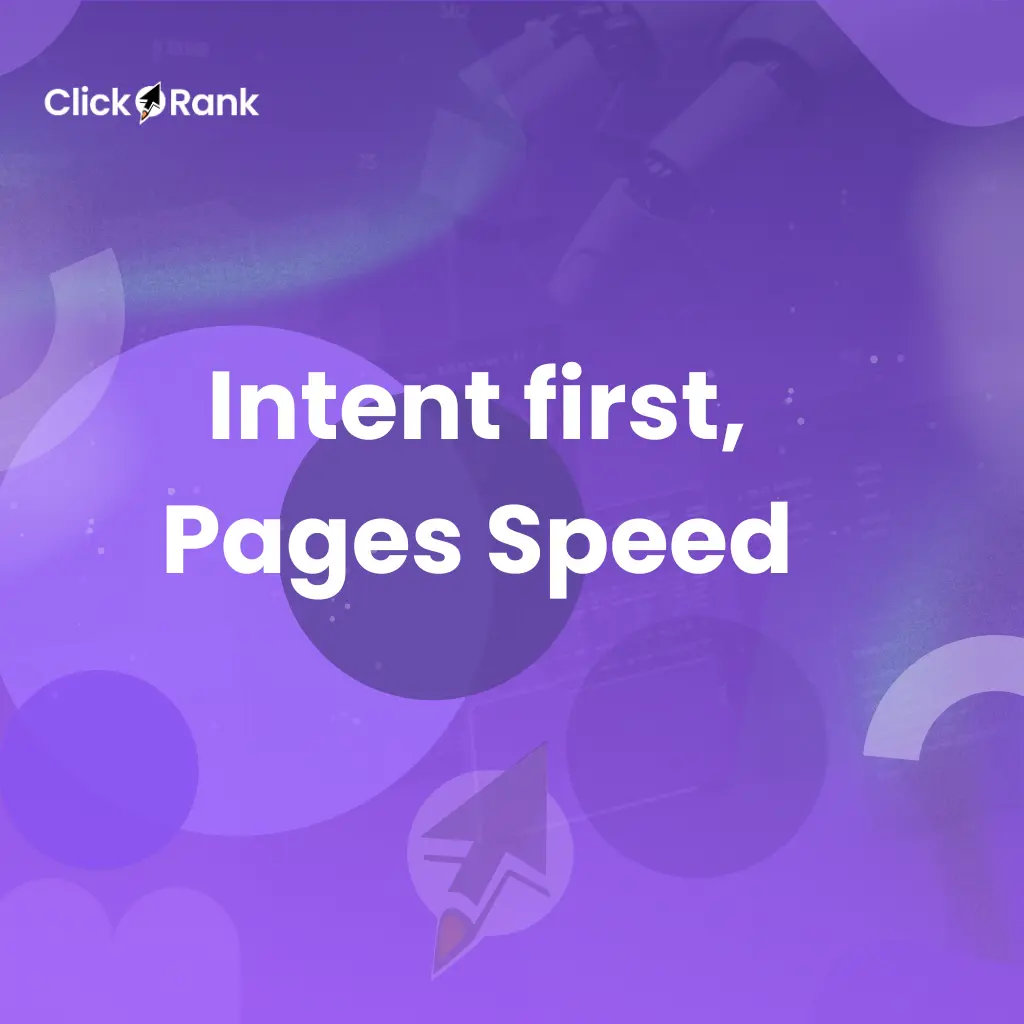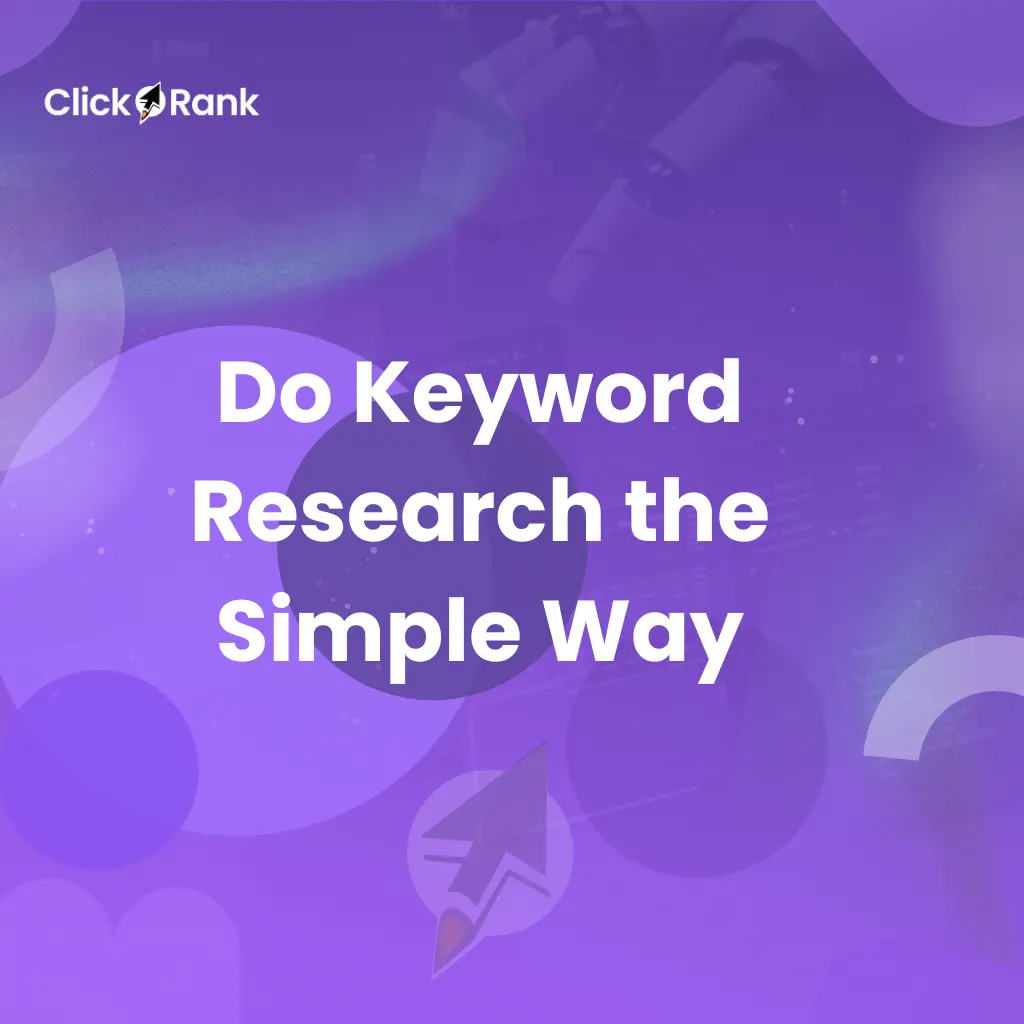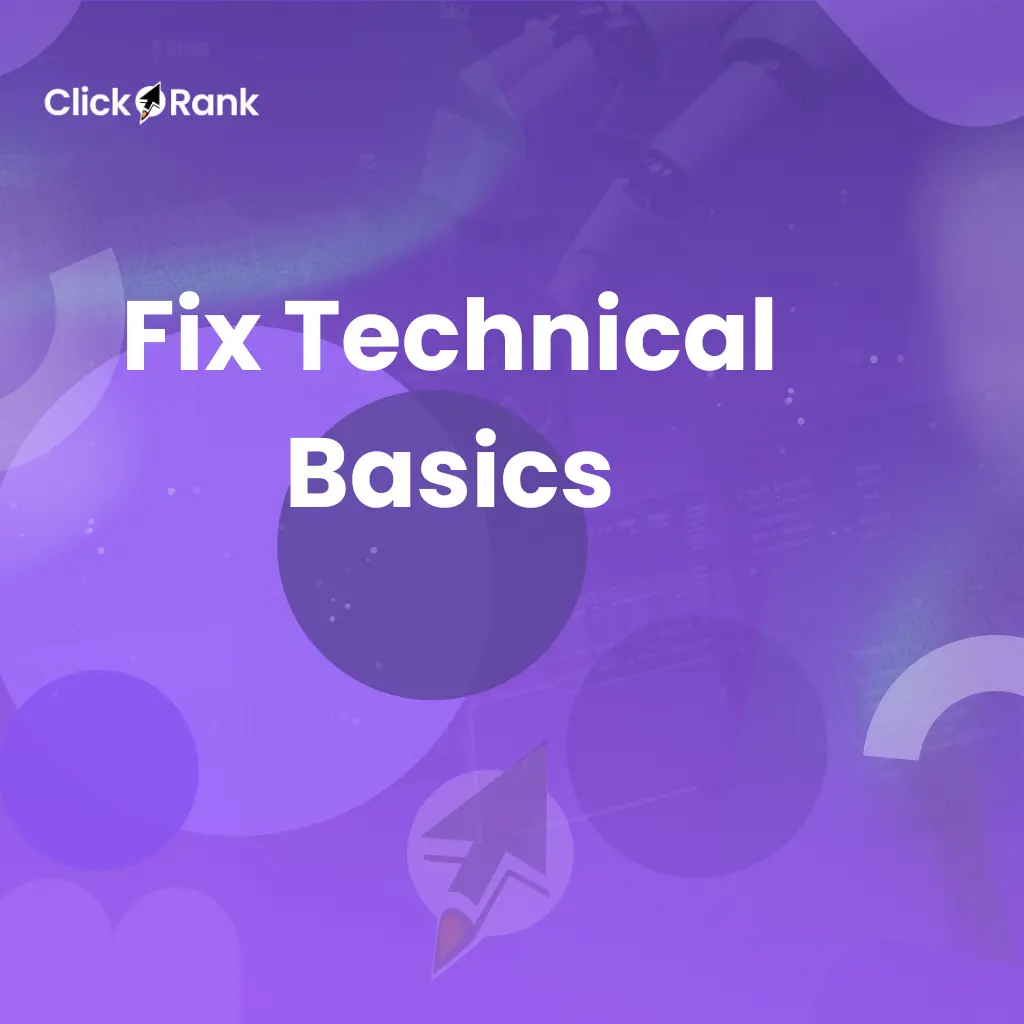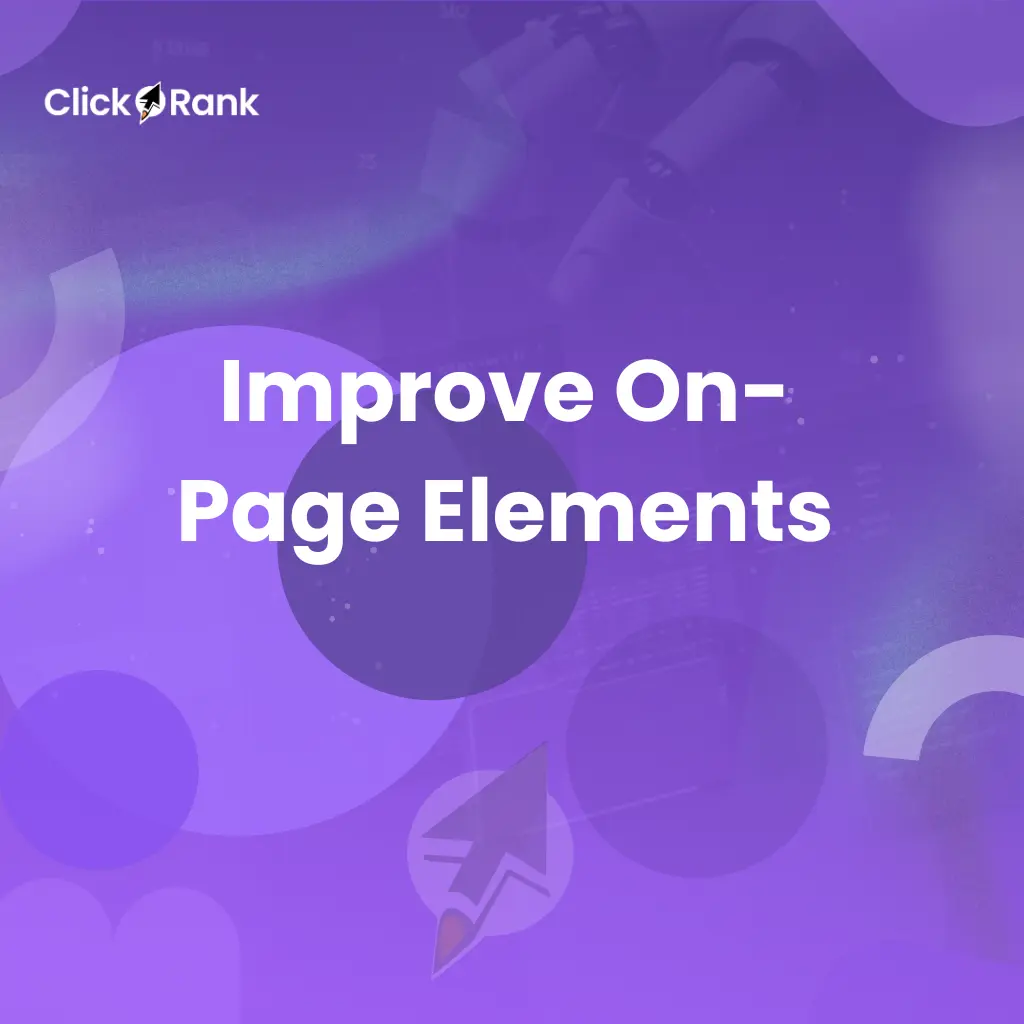Dominate E-commerce: Your Guide to SEO for Fashion Stores
Have you ever seen your perfect fashion product lost on page two of Google? It's a common problem. Maybe your images are too big, or your product descriptions aren't doing their job. These issues stop people from finding your great products. At ClickRank, we fix these SEO problems for you. Our tool finds what's wrong and makes it right with just one click. This guide will show you how to get your fashion e-commerce site seen by more people.
Core Services for Fashion SEO Success
Getting found online is the first step to selling more clothes. I can help you understand the main parts of an online clothing store's search engine optimization. It's more than just keywords. It's about making your whole website work better for both people and search engines.
What is Fashion SEO Services? The Complete Breakdown
Think of it as a full-service plan. It includes everything from finding the right words people use to search for your clothes to making sure your site is fast. This kind of service helps your brand get noticed online.
The Role of a Fashion SEO Agency in Your Business
A good fashion digital marketing company knows your business. They understand trends and seasons. They can help you with a full plan to get your brand in front of the right people at the right time.
The Power of Holistic Fashion SEO Strategies
This means looking at your whole online presence. We look at your website, social media, and how other sites link to you. A full plan helps your brand grow strong and stay visible.
A holistic approach to search engine optimization for fashion brands is key. It’s not just a single trick, but many small fixes that come together to create a powerful online presence. This way, your store is always ready for what’s new in fashion.
Technical SEO for E-commerce Optimization
A great-looking site is nothing if search engines can't read it. Technical SEO is all about the back-end stuff that helps crawlers and users. It’s about making your site fast and easy to use. I will help you with a checklist for your clothing store.
Unlocking Potential: SEO for Fashion E-commerce
We check your site’s health. Is it fast? Is it easy to use on a phone? These things matter a lot for getting a good spot on Google. We look at your site speed and mobile-friendliness.
Best Practices for SEO for Fashion Stores: A Checklist
I will help you follow a clear checklist. This includes making sure your URLs are clean and that your website has a good site architecture. We also check for an SSL certificate to make sure your site is secure.
Driving Sales with E-commerce-Specific Fashion SEO
We use things like structured data (Schema Markup) to help Google understand your product information. This helps you get rich snippets, showing things like prices and reviews right in the search results.
Technical SEO for an online clothing shop is about laying a strong, hidden foundation. It makes your site reliable and ready for people to find and buy your clothes.
General SEO and Agency Collaboration
Sometimes, you need a partner to grow. A good fashion SEO agency can help you with bigger plans. They can handle the work while you focus on your clothes.
Foundational Principles of General Fashion SEO
The basics are always important. We help you with keyword research to find what your customers are searching for. I look for both short-tail and long-tail words, and even seasonal and trend-based terms.
When to Hire a Specialized Fashion SEO Agency
If you are a big company or want to grow fast, an agency can help. They have the tools and people to get your brand seen. They can work on your content marketing and off-page SEO for you.
How a Fashion SEO Agency Can Scale Your Brand
An agency can help you get more backlinks and work on influencer outreach. This helps build brand mentions and signals to Google that you are a trusted name in fashion.
Working with a good digital marketing company is a smart choice for big plans. They can help you get the online presence you need to become a top brand.
How to Implement On-Page SEO for Your Fashion Store
This part of SEO is about what you can see on your page. We make sure every product page and category page is perfect. This is where we focus on on-page SEO. Our ClickRank tool makes this easy. It's the same as I talk about in my other article, a comprehensive guide to on-page SEO.
Creating Unique, High-Ranking Product Descriptions
No one wants to read the same description from the manufacturer. I write unique descriptions for each product. This helps my pages rank higher and helps customers want to buy. I focus on answering their search intent and questions. I check if their intent is informational, commercial, or transactional and write to match it.
The Importance of Internal Linking for Product Discovery
When I write about a new dress, I link to other shoes or bags that go with it. This is internal linking. It helps people find more products and helps Google understand how my pages are related. This also helps with User Experience (UX).
Optimizing Images for Fashion E-commerce
Big pictures slow down your site. I use tools to make sure my images are small but still look great. I also give them good Image Alt Text so search engines know what they are. Our ClickRank tool can automatically create Image Alt Text for you, so you don't have to write it yourself. It's a one-click solution.
Perfecting your on-page elements is the best thing you can do for your business. It makes your site friendly to customers and search engines, which leads to more traffic and sales.
Troubleshooting Common SEO Issues in the Fashion Industry
Even with a good plan, problems can happen. I will help you fix common issues that can hurt your rankings and sales. Our ClickRank ClickRank Audit tool can find these problems for you.
Solving Duplicate Content Problems for Product Pages
Many stores use the same product info from the manufacturer. This is bad for SEO. I show you how to write new, unique product descriptions and fix duplicate content with a canonical tag.
Fixing Slow Site Speed and Improving User Experience
A slow site makes people leave. I help you find and fix things that slow down your website. I will check for large images and other things that hurt your site speed, which is a key part of technical SEO.
The Dangers of Unoptimized Visual Content
Images and videos are important for fashion. But if they are not the right size, they can hurt your site. I will show you how to use image carousels and other SERP features to make your site look great without being slow.
Finding and fixing problems is part of the work. With the right tools and knowledge, you can solve these issues and make your site better.
Meta Tags that Lift Click-Throughs
Meta tags help users choose your result. They also guide crawlers.
What are meta tags?
They are short pieces of code that tell search engines and users what a page is about. Key ones include title tags and meta descriptions. There are also robots meta tags for crawl rules and canonical tags for duplicates.
Types you should set
Title tags: Keep under ~60–65 characters. Put the main idea first. Meta descriptions: Keep under ~155–160 characters. Make it clear and action-focused. Robots meta tags: Control indexing and following. Canonical tags: Point to the main version when duplicates exist. ClickRank suggests and applies one-click fixes for missing or weak tags.
How to implement
Most platforms let you edit these fields per page. Create templates for categories and products. Use dynamic fields like {{brand}} {{product_name}} {{color}}. ClickRank can auto-apply safe templates based on live performance data.
Keep a simple checklist to repeat success
Use this as a quick review for your team.
Search intent and keywords
Group queries by informational, commercial, and transactional. Use short-tail for categories and long-tail for products. Track seasonal and trend-based spikes (e.g., “Eid outfits,” “summer sandals”). Build content that answers the need fast.
Content and off-page
Publish style guides, trend reports, and size/fit explainers. Invite user-generated content and video content. Earn quality backlinks with lookbooks and collabs. Encourage social shares for brand mentions and social media signals.
SERP features and measurement
Target rich snippets with schema. Aim for image packs with clean, fast images. Answer common questions to appear in “People Also Ask.” Track rankings, CTR, revenue, and return rate. Use ClickRank’s Smart Recommendations to focus on the top impact tasks.
Why All This Matters for Your Fashion BusinessDetailed descriptions that tell shoppers everything they need to know, from fabric to fit. These help attract high-intent shoppers.High-quality images that show the product from different angles. You can even use optimized images with descriptive alt tags and proper image file names to help them appear in image searches.
Why Choose ClickRank for Your Fashion Store?
At ClickRank, we give you the power to automate your SEO. You don’t need to be a full-time expert. We help content teams and marketers save time and get better results. Our tool finds problems and fixes them for you, so you can focus on your business.
ClickRank Audit
A fast, AI-powered SEO audit that connects to Google Search Console to find problems.
One-Click Fixes
We offer automated fixes for meta tags, headings, and links. You don't need a developer.
On-Page Optimization
Automatically improves CTRs, keyword alignment, and internal linking for better performance.
Smart Recommendations
We give you prioritized, actionable SEO fixes based on your real performance data.
Getting your fashion brand to the top of Google’s Search Engine Results Page (SERP) takes a lot of work. You need to think about every part of your website, from the product descriptions to the code. We’ve talked about technical SEO and on-page SEO. These are big parts of the work. But there are more things.
You have to think about what people search for. Do they want to know “how to style a long coat?” That’s informational search intent. Or are they looking to “buy a black dress?” That’s transactional intent. Your content has to match these needs. A good content marketing plan helps here. Writing blog posts, like style guides and trend reports, helps you get found for those informational searches. Using a product feed helps with product discoverability in search results. I have seen how Google’s crawlers index these kinds of pages. It’s important to make the content easy for them to read. This is why things like Header Tags (H1-H6) are so important.
Your social media is also a part of the plan. When people share your content, it sends social media signals. This can help you get seen. You also need to get other sites to link to you. This is called backlinks and is part of off-page SEO. It helps build trust with search engines. I have seen that using video content can help a lot. It is great for engagement and can also get you seen in SERP features. All these things together build a strong online store. It takes a lot of work, but with the right tools, it is possible.
My 6-Step Playbook for Fashion E-commerce
Follow these steps in order. Keep each step small and repeat weekly. Progress beats perfection.

Map Search Intent to Pages
I match informational content to blogs and guides; commercial intent to categories; transactional intent to product pages.
-
Write clear H1s that reflect user needs.
-
Add “How to style” guides for early-stage users.
-
Use comparison blocks on category pages.
When intent and page type fit, CTR and time on page rise.
Do Keyword Research the Simple Way
I build a seed list, then expand to trend-based terms for drops and holidays.
-
Track seasonal lines and size/fit terms.
-
Add intent labels to each keyword.
-
Map keywords to one page each.
-
Avoid overlap that causes cannibalization.
ClickRank helps me organize lists and pick targets by potential value.


Fix Technical Basics
I compress images, lazy-load, and clean up scripts. I stabilize site architecture and add product/schema markup.
-
Pass Core Web Vitals on key templates.
-
Add SSL and submit fresh sitemaps.
-
Set canonical rules for variants.
A clean base makes crawling and UX stronger.
Improve On-Page Elements
I write compact, useful titles and meta descriptions, then add clear H2–H3 sections and internal links.
-
Keep titles under ~60 chars.
-
Write benefit-first descriptions.
-
Use descriptive alt text.
One-Click Fixes in ClickRank speeds this across the catalog.

Frequently Asked Questions (FAQ)
1- How often should I update my strategy?
I review core pages monthly and big categories weekly during peak season. I refresh guides each quarter or before a major drop.
2-Can I handle this work myself?
Yes, start small: fix titles and descriptions, compress images, and add internal links. As you scale, use ClickRank and bring in a specialist.
3- What is the most important part of fashion e-commerce SEO?
Fit the page to the user’s intent and keep the site fast. Those two steps drive most of the gains.
4- How do meta tags affect performance?
Better titles and descriptions improve CTR and help pages earn richer snippets. This brings more qualified clicks.
5- Which content works best for apparel?
Style guides, size and care posts, trend reports, UGC highlights, and short videos. Link them to categories and products.
What technical items should I check first?
Core Web Vitals, mobile-friendliness, structured data, clean URLs, sitemaps, and canonical rules for variants.
Run Your Free ClickRank Audit Today
Open your dashboard, run the ClickRank Audit, and review Smart Recommendations. Apply One-Click Fixes for metadata, headings, and internal links. In less than an hour, you can improve speed, clarity, and product discoverability. Ready to move? Try the audit now and make your next drop your best one yet.